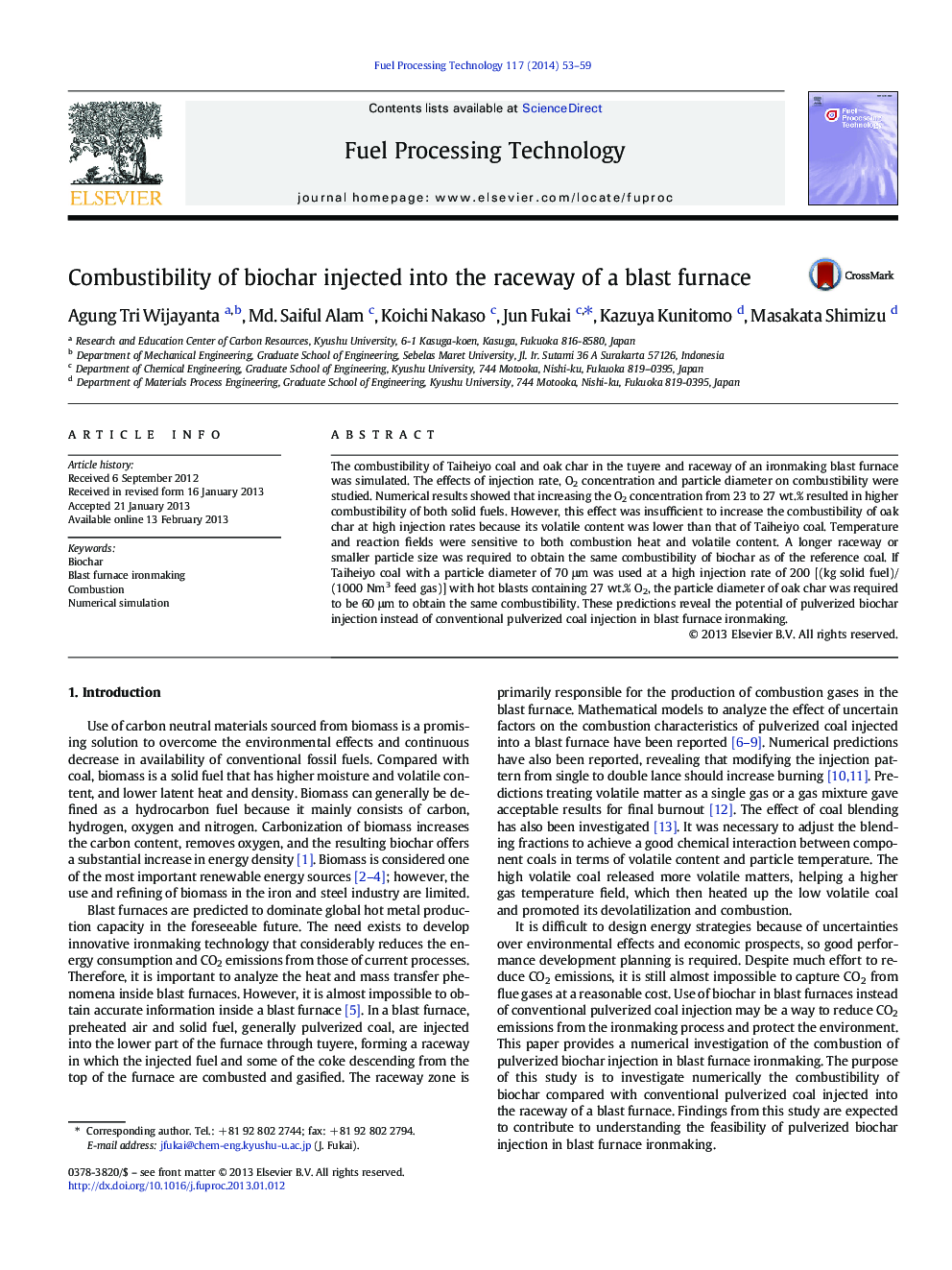| Article ID | Journal | Published Year | Pages | File Type |
|---|---|---|---|---|
| 209951 | Fuel Processing Technology | 2014 | 7 Pages |
The combustibility of Taiheiyo coal and oak char in the tuyere and raceway of an ironmaking blast furnace was simulated. The effects of injection rate, O2 concentration and particle diameter on combustibility were studied. Numerical results showed that increasing the O2 concentration from 23 to 27 wt.% resulted in higher combustibility of both solid fuels. However, this effect was insufficient to increase the combustibility of oak char at high injection rates because its volatile content was lower than that of Taiheiyo coal. Temperature and reaction fields were sensitive to both combustion heat and volatile content. A longer raceway or smaller particle size was required to obtain the same combustibility of biochar as of the reference coal. If Taiheiyo coal with a particle diameter of 70 μm was used at a high injection rate of 200 [(kg solid fuel)/(1000 Nm3 feed gas)] with hot blasts containing 27 wt.% O2, the particle diameter of oak char was required to be 60 μm to obtain the same combustibility. These predictions reveal the potential of pulverized biochar injection instead of conventional pulverized coal injection in blast furnace ironmaking.
► Temperature and reaction fields are sensitive to combustion heat and volatile content. ► Increase in O2 concentration is not enough to increase combustibility of biochar. ► Biochar properties become increasingly important as the injection rate is increased. ► A longer raceway or smaller particle size is required for biochar.
